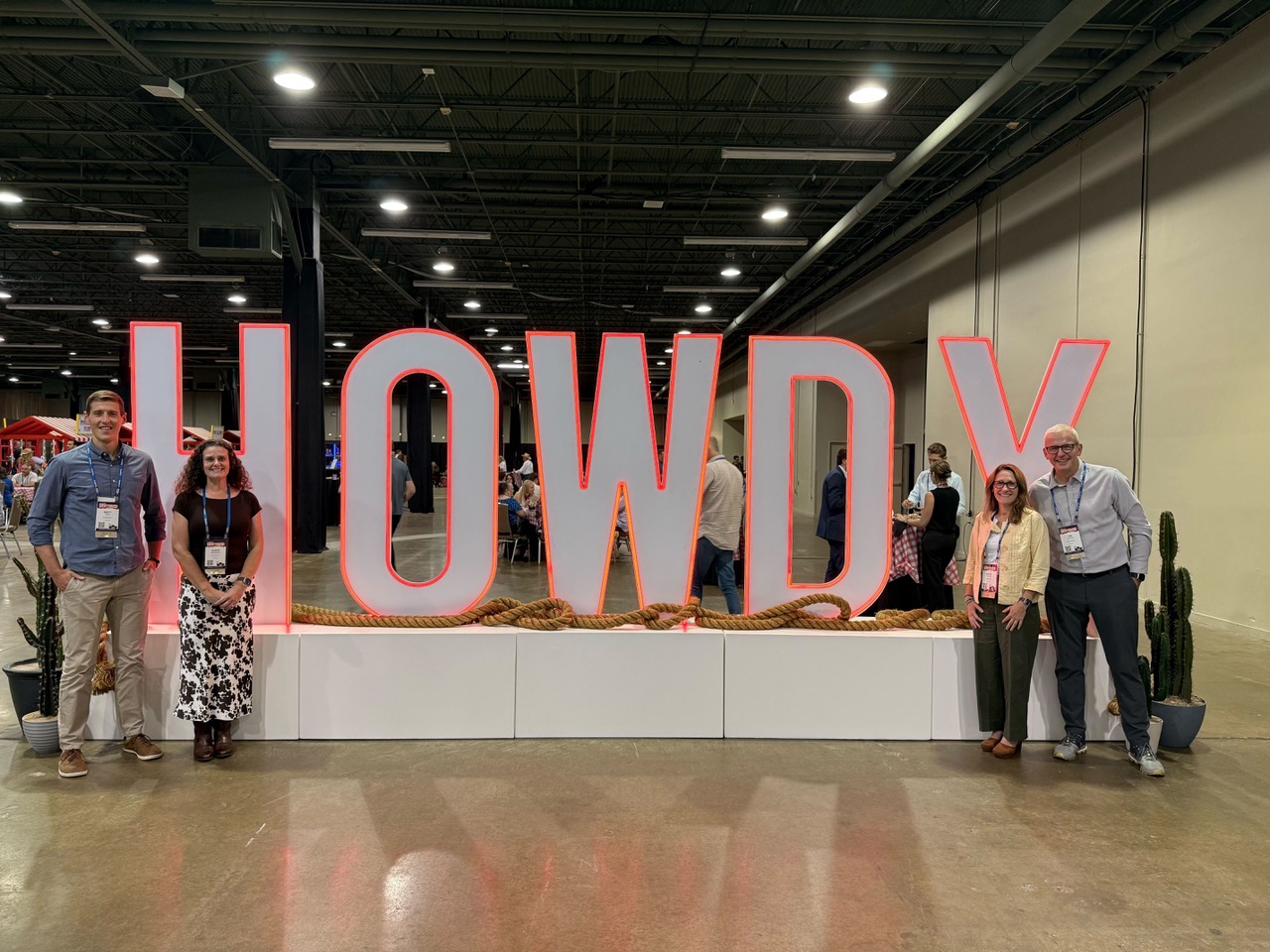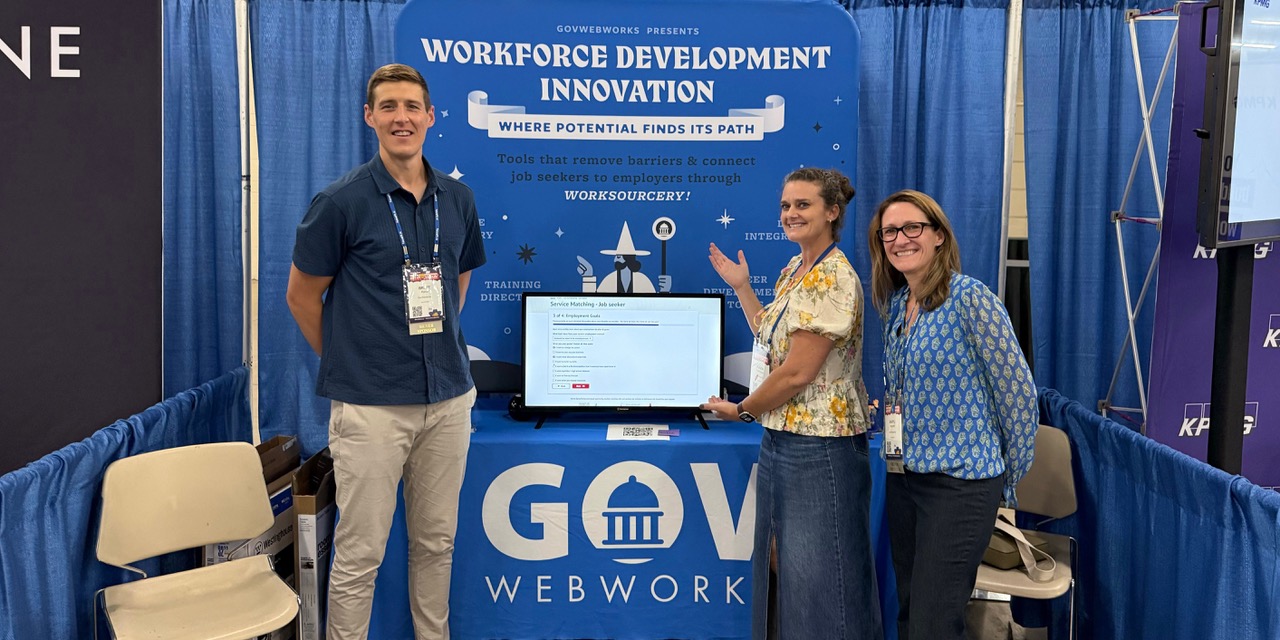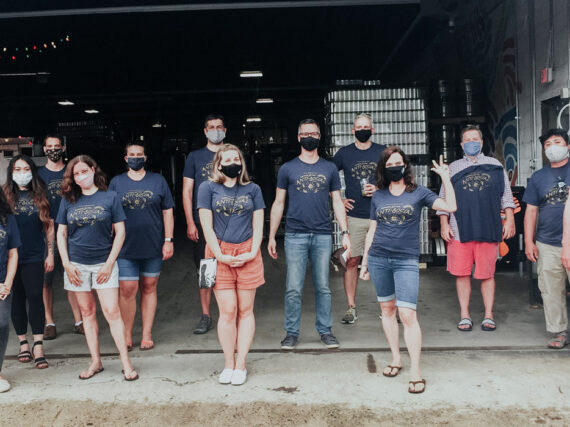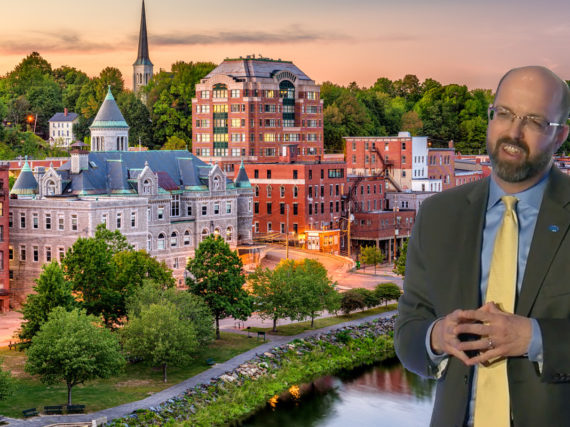How is it possible to deliver workforce development services in a time of tightening budgets, rising expectations, and rapid technological change? That question was front and center at the 2025 NASWA Summit in Dallas, where workforce leaders from across the country gathered to share updates and ideas.
The GovWebworks (GWW) team was there too. We’ve been fortunate to carve out a niche in this space over the last six years, beginning with Minnesota and continuing in Idaho and Maine. As we support those states in modernizing their workforce systems, the Summit was an important opportunity to take the pulse of what’s trending and what lies ahead for state workforce development.

Brett, Alison, Karyl, and Tom were given a warm Texas welcome as they arrived for two action packed days of workforce development innovation at the NASWA 2025 Summit.
Doing more with less
The backdrop right now is a challenging one. On Capitol Hill, significant funding reductions are being proposed, including a 34% cut to the US Department of Labor. Consolidation of programs into block grants under the proposed “Make America Skilled Again” framework could mean less flexibility and fewer dollars for states to work with, but at the same time indicates a shift in focus towards apprenticeships and other paid learning opportunities.
Meanwhile, new regulatory requirements, such as the Department of Justice’s 2026 deadline for compliance with WCAG 2.1 accessibility standards, are quickly approaching. These realities set the tone for the year ahead: states are being asked to do more with less.
That all being said, what stood out most in Dallas was not discouragement, but determination. States are preparing to adapt, modernize, and rethink how they deliver workforce services.
The following four themes rose to the top of nearly every discussion.
1. AI as a new operating pattern
It’s no surprise that AI dominated the agenda. What’s striking is how far it has moved from pilot projects to practical applications. States are shifting from experimenting to operationalizing. During a breakout session titled “Trailblazing AI: Solutions for a Modern Workforce,” we saw live demonstrations showcasing how North Carolina and Washington DC are using AI to support their unemployment insurance operations through the use of conversational assistants to streamline intake, perform initial eligibility assessments, and use predictive analytics to identify clients who may need additional support.
We also saw how Indiana leveraged AI in a homegrown plain language assessment tool they used to remediate over 750 documents that read at a high school or college level. DC is also using an AI driven skills matching tool to connect job seekers to opportunities in the area with greater precision. The message throughout all of these examples was clear: for workforce systems under financial strain, AI is becoming less of a novelty and more of a necessity.
2. Raising the bar with personalized experiences
Job seekers expect intuitive and tailored experiences that reflect their unique skills, interests, and goals. States are moving beyond generic job boards toward tools that provide tailored recommendations for careers, training, and next steps. Chatbots and virtual assistants that can intelligently guide users toward a career path and suggest specific training or education opportunities accordingly are becoming increasingly commonplace.
We’ve seen and heard the importance of this with our clients in Maine and Minnesota, where our users are seeking more than just ‘jobs,’ but clear paths toward family-sustaining careers in those states’ key industries.
3. Breaking down silos
Another major theme was the importance of providing job seekers with ‘wraparound supports’ and the intra-agency collaboration required to do so. Helping someone get a job is only one part of the equation; addressing barriers like transportation, childcare, or access to SNAP and Medicaid services is equally critical in unlocking someone’s potential to get a job in the first place.
In a case study from New Mexico, the Department of Workforce Solutions partnered with the state’s Department of Transportation along with the higher education department to develop a paid 10-week training program. Students graduated as either certified commercial drivers or heavy equipment operators with full time jobs and benefits, addressing both a dire gap in the transportation workforce, as well as a lack of opportunities in rural underserved areas. Forward-looking agencies are combining forces, getting creative with joint-funding models, and pursuing integrated “no wrong door” models that allow people to access multiple supports through a single entry point. This isn’t easy—it requires coordination and technical integrations across the departments of health, education, and transportation—but it’s the direction the field is heading.
“This is a tsunami of change that we are going through” said NASWA CEO and president Scott Sanders. At the same time, he continued to emphasize that “we are stronger together so we can continue to figure out how to navigate this wave together.”
4. Accessibility and inclusion required
With the 2026 ADA digital accessibility deadline approaching, agencies are also turning their attention to compliance. Accessibility audits, content reviews, and plain language policies are moving higher on priority lists. For many, the challenge is not just technical but cultural: how to embed accessibility and inclusion into everyday practice. AI offers some support here as well, from reading-level analysis to document remediation tools, but thoughtful oversight and governance remain essential. For us at GWW, accessibility is nothing new. We’ve been designing and delivering “beyond compliance” accessible solutions for years now, and are proud to be leaders in this space. If anyone needs a refresher, check out our blog post 9 Best Practices for Web Content Accessibility.
So, where does that leave us?
Taken together, these themes point to a familiar but pressing reality: agencies are being asked to serve more people with fewer resources, while also meeting higher expectations for inclusivity and digital experience. That’s not an easy balance, but it is possible.
At GovWebworks, we’ve seen firsthand how states can rise to the occasion for workforce development. In Minnesota, Idaho, and Maine, the systems we build are not only modern and accessible, but also responsive to the real needs of job seekers and employers. The lesson we carry forward from Dallas is clear: the challenges are real, but so is the resolve. As we look ahead to 2026, the path forward will require creativity, collaboration, and focus. But with the right approach and the right partnerships, doing more with less can lead to better outcomes for everyone.
“Attending the NASWA Conference was an inspiring opportunity to exchange ideas and strengthen partnerships,” says Alison Schestopol, GWW Director of Project Management and Quality Assurance. “We brought back valuable insights to support our workforce clients.”
Learn more
- Expanding Access to Career Support: Kim Moore on Maine Department of Labor’s Work Source Maine Virtual CareerCenter
- Workforce topics on GovWebworks
- Contact us to learn more about our Workforce services







